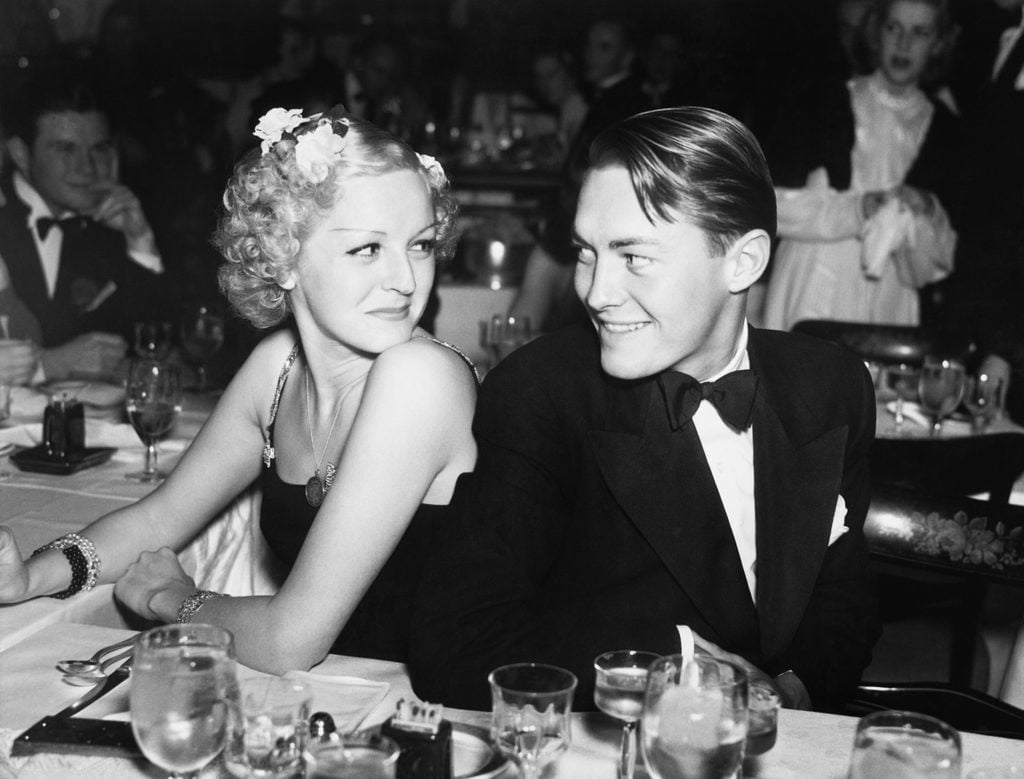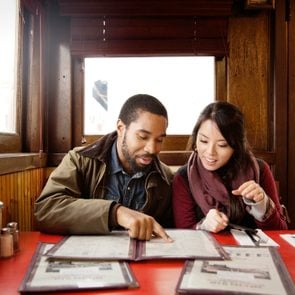Elbows on the Table: Why Is It Considered Rude?
Updated: Aug. 12, 2024

No elbows on the table is one of the oldest etiquette rules in the book—but why? Find out how this maxim originated and if it's still a thing today.
“Mabel, Mabel, sweet and able, get your elbows off the table!” The nursery rhyme may be outdated, but the elbows-on-the-table etiquette rule that it preaches has endured—and for good reason. “Nonverbal body language speaks louder than words,” says etiquette expert Diane Gottsman, who holds a master’s degree in human behavior and is the founder of the Protocol School of Texas. “This may sound harsh, but putting your elbows on the table sends the message that you are impolite, lazy and rude.” Yikes!
So why are elbows on the table rude? Some say the origin of this specific table-manners mantra was born in the Middle Ages, when guests at crowded banquet tables were jostling for space at unstable trestle tables. Others cite its mention in an early civility handbook for children, written by the Dutch Renaissance theologian Erasmus of Rotterdam in the 1530s. But no matter how it started, many of today’s top etiquette pros believe in the rule mightily. So we turned to Gottsman and two other etiquette experts to better understand why every mom’s admonishments of no elbows on the table has persisted through the generations.
Read on for a quick history lesson, and learn the nitty-gritty rules that will help you shine at the dining table every time.
Get Reader’s Digest’s Read Up newsletter for more etiquette, humor, cleaning, travel, tech and fun facts all week long.
How did the elbow rule start?
The initial reason was much more intuitive than you’d think. For earlier civilizations, the rule helped prevent violence at the table. “Table manners prevented us from leaving our space and starting a fight,” says Margaret Visser, author of The Rituals of Dinner: The Origins, Evolution, Eccentricities, and Meaning of Table Manners. “It was important that people saw you as considerate or trying hard.”
Need a visual? Think of the place setting’s fork and knife as an imaginary boundary for one’s allotted space at the table. Neglecting or fracturing that border indicated that you had no regard for order and were potentially unhinged! “People got scared when you started having bad manners,” Visser explains. “They realized the taboo was not functioning and you didn’t know what this person was going to do next.”
Why did this etiquette rule stick?
These days, we’re less apt to lunge over the table during a business lunch gone awry than we may have been a few hundred years ago, but there are still plenty of good reasons to avoid elbowing your way through a meal. The first has to do with the universal language of principle, according to Henry Hitchings, author of Sorry! The English and Their Manners. “It embodies two ideas: that at mealtime, one shouldn’t do anything that inconveniences other diners, and that a meal is a formal occasion where one shouldn’t behave in an overfamiliar fashion,” Hitchings says. So, no elbows on the table boils down to our innate human instinct to avoid transgression, especially over another’s comfort and space.
Gottsman agrees with the concept of boundaries: “Giving someone ‘elbow room’ means giving them the room to move around. But at the table, it’s rude to lean into or reach over someone else’s personal space.”
Are elbows on the table still considered rude today?
The short answer? Yes. We’re not saying that ignoring elbows-on-the-table etiquette will bring dishonor upon your family. But the practice can raise a red flag and signal a lack of polish and breeding to your fellow diners. “People make judgments based on what they see,” Gottsman says, “and you never know if you’re sitting across from someone who is really clued in to good manners.”
She adds that placing your elbows on the table literally changes your posture—and not in a good way. “When elbows are on the table, you’re automatically leaning forward, slouching, and might even be obstructing the view of fellow guests who are attempting to see past you to hear someone speak or keep eye contact.”
Are there any exceptions to the rule?

Sorry to be a buzzkill, but there should be no elbows on the table from the moment you sit down until the moment you get up. Which means you can forget about relaxing the rules a bit between courses—or bringing those elbows up flirtatiously when you’re tucking hands under your chin and gazing romantically into someone’s eyes, says Gottsman.
Other surprising reasons to keep your elbows off the table
Rules of etiquette aside, there are some rather pragmatic reasons to avoid placing your elbows on the table—ones that have nothing to do with Miss Manners.
- The bump factor: The minute your elbows go up, you’re automatically using more real estate than the diner next to you, which means you’re increasing the chance that you’ll bump someone’s arm or spill something (wine, soup on a spoon, you name it).
- Good digestion: Placing your elbows on the table puts your body in a slouching position, and that posture may compress your ribs and lower back, ultimately squashing your stomach and getting in the way of your digestion.
- Body language: According to Gottsman, slouching sends the wrong message. Instead of appearing attentive and positive—with your shoulders back, eyes engaged and body forward—your elbows-on-the-table slouch can make you appear bored and uninterested in the conversation. If that’s not what you want your body language to convey, keep those elbows off the table!
We may be several hundred years beyond feudalism at banquet tables or passing communal wine goblets, but the elbow rule—for Mabel and everyone else—remains firmly intact.
About the experts
|
Why trust us
Reader’s Digest has published hundreds of etiquette stories that help readers navigate communication in a changing world. We regularly cover topics such as the best messages to send for any occasion, polite habits that aren’t as polite as they seem, email and texting etiquette, business etiquette, tipping etiquette, travel etiquette and more. We’re committed to producing high-quality content by writers with expertise and experience in their field in consultation with relevant, qualified experts. We rely on reputable primary sources, including government and professional organizations and academic institutions as well as our writers’ personal experience where appropriate. We verify all facts and data, back them with credible sourcing and revisit them over time to ensure they remain accurate and up to date. Read more about our team, our contributors and our editorial policies.
Sources:
- Diane Gottsman, etiquette expert, founder of the Protocol School of Texas and author of Modern Etiquette for a Better Life; interview, July 26, 2024
- Henry Hitchings, author of Sorry! The English and Their Manners
- Margaret Visser, author of The Rituals of Dinner: The Origins, Evolution, Eccentricities, and Meaning of Table Manners
- Food Republic: “The Medieval Origins of ‘No Elbows on the Table’ Etiquette”
- The Etiquette Consultant: “Elbows on the Table. Yes or No?”






















